Limited time offer!
JULY SALE, use code "JULY10" to get 10% OFF
The breast development process is a different experience for everyone. Every female body is unique and some take longer than others to fully develop.
On average, breasts begin to grow between the ages of eight and 14 years. For some, they’ll continue to grow up until the individual is 18. For others, they keep growing up until the age of 25.
Once a young lady has undergone puberty, the body no longer produces the amount of estrogen needed to continue the breast growth process.

Aside from puberty, there are other factors that contribute to breast growth later in life. These include:
We’ll focus on the above factors and how they contribute to changes in breast size. We’ll also inform you of healthy and safe supplements that can boost breast growth after puberty.
“Why are my boobs not growing?” This is a question that lingers in the minds of some women with very small breasts. Most of them are particularly concerned with the age at which breasts stop growing.
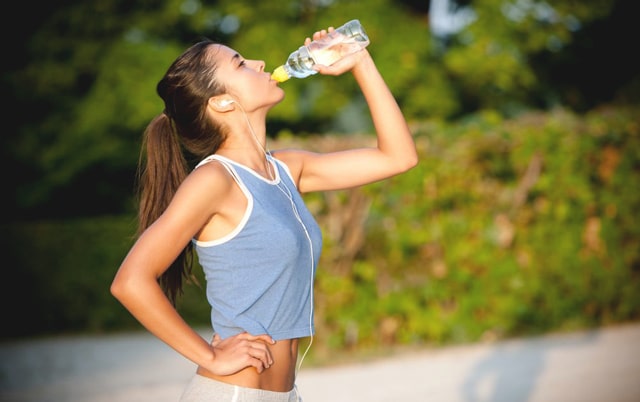
Breast size can be determined by genetics. Some women are predisposed to have small breasts simply because of their genetic makeup.
Looking at your family tree—from mothers, aunts, and sisters, to grandmothers—will give you an idea of whether your breast size is genetic.
Genetics don’t apply to everyone’s breast size, however. You may find that breast sizes differ even among close family members.
Other factors that will influence the size of your boobs include the following:
We suggest naturally letting your body run its course through breast growth. Sometimes you may think they’re done growing, only to be surprised by a growth spurt later on.
When you feel like you’re losing hope, you can boost breast growth in a healthy way, using Bust Bunny Breast Enhancement supplements.
Bust Bunny Breast Enhancement is natural, scientifically tested, and can help boost the size of your boobs.
See what others think about it:
“In the 3 months of my first order, my boobs went from a B cup to a D!!! This product is no risk.. inexpensive and works! It’s a no-brainer!!!”
– Jami
After puberty, breasts will normally stop growing. But many changes can still happen between this time and menopause.
For those still hoping for breast development, you’ll want to watch out for signs that indicate the halting of breast growth, such as:
On a positive note, just because your breasts may have stopped growing in your teens doesn’t mean they are done for life. As you may have heard, during pregnancy your breasts will fluctuate in size.
Hormonal birth control may also increase your breast size. Once you stop taking it, your boobs may go back to their original size.
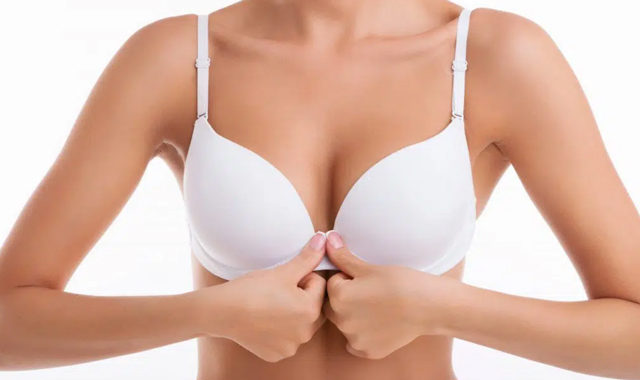
There’s no definitive answer as to when a woman’s breasts stop growing. After the normal growth spurt during puberty, there are other factors that will contribute to their fluctuation in size.
Pregnancy, menstruation, weight loss, and weight gain cause breast size and shape to fluctuate. These fluctuations only stop after a woman hits menopause.
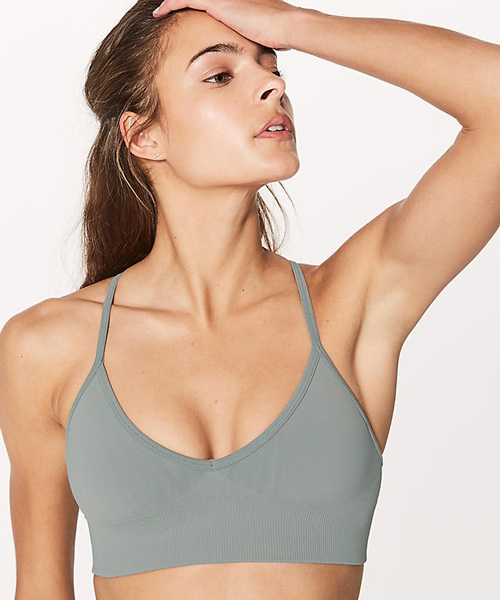
According to the National Institutes of Health (NIH), menopause usually occurs between 45 and 55 years of age.
During this time, menstruation comes to an end and the body stops producing estrogen. This puts all hormonal changes in the body to a halt.
From there, the breasts begin to shrink. This is when you know your breasts are done growing.
To understand your breasts and how they develop, it’s essential to know the different stages of their development.
Although noticeable changes only start during adolescence, breasts begin growing when the female is still a fetus.
The table below outlines breast development from birth to menopause.
| Stage | Changes |
| Birth |
|
| Puberty 9–14 years |
|
| Menopause 45–55 years |
|
According to the diagram below, breast development causes shifts in shape and size at every stage.
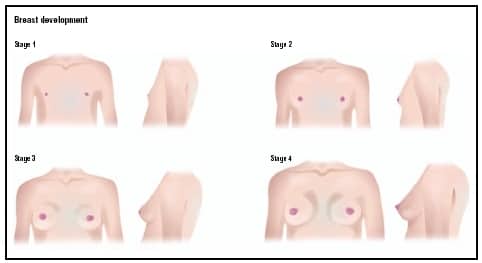
Stage I: This is the preadolescence phase where your breasts are flat and your nipples are elevated. There is no formation of breast tissue at this stage, so your breasts remain flat.
Stage II: This is the time where milk ducts and fat tissues start to arise. A small bud-like breast is formed in this stage.
Stage III: Prepubescent phase when the breasts begin to change and fatty tissue begins to increase in size. This stage is where your breast shape will form.
Stage IV: This is the stage where the progesterone hormone is released and you will begin menstruating. Progesterone is responsible for milk production. It’s at this stage when you will start to notice the shape and firmness of your breasts.
After breasts begin developing, it’s essential to start performing breast self-examinations regularly. We suggest asking your doctor to show you how to do it properly.
It’s also important to wear the right bra size. This not only keeps you comfortable but will help keep your breasts in good shape.
If you notice that one breast is growing larger than the other, don’t panic. Asymmetry is normal.
This imbalance is usually due to hormonal changes in your body. Most of the time, the difference is so slight that only you can tell.
There’s no need for medical treatment for unequal breast size. It doesn’t pose any risk or affect breastfeeding.
If you’re still feeling self-conscious, we suggest talking to your family doctor to be sure.
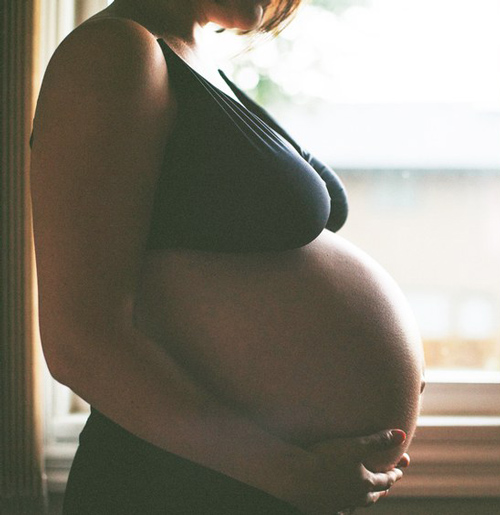
Pregnancy changes the size of your breasts dramatically. The changes are hormonal, and they help get your breasts ready for breastfeeding.
From around six to eight weeks of pregnancy, you’ll start noticing changes.
Signs that your breasts are growing include:
The breasts remain large in size even after pregnancy. They only go back to their normal size once you stop breastfeeding.
For some women, breasts never go back to their original size and shape even after breastfeeding has stopped. This is usually due to genetics and weight fluctuations during pregnancy.
Sometimes breasts don’t grow as much as you’d like. Other phases in life, like pregnancy, can completely alter their appearance.
At Bust Bunny, we understand how much it means for women to acquire perky and round breasts in a healthy natural way.
We’ve created the Bust Bunny Breast Enhancement supplement to help you get bigger breasts in a safe manner.
Our establishment is rooted in science, good health, and customer satisfaction. This is why Bust Bunny is scientifically tested and produced in an FDA-compliant facility.
You can shop for Bust Bunny Breast Enhancement supplements here. Check out our website to learn more.
“I’m very happy with my results! My boobs are fuller and perkier. Been using it for 3 months! LOVE! No longer considering breast implants.”
– Amazon Customer